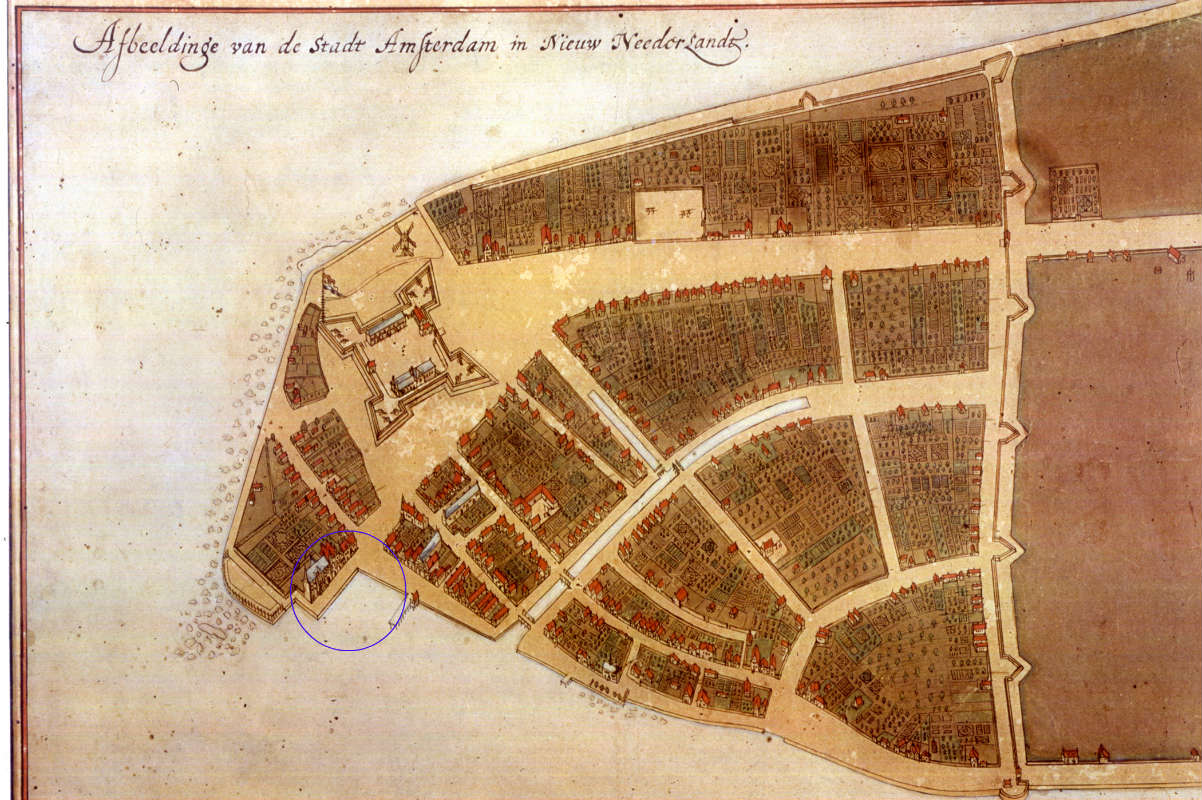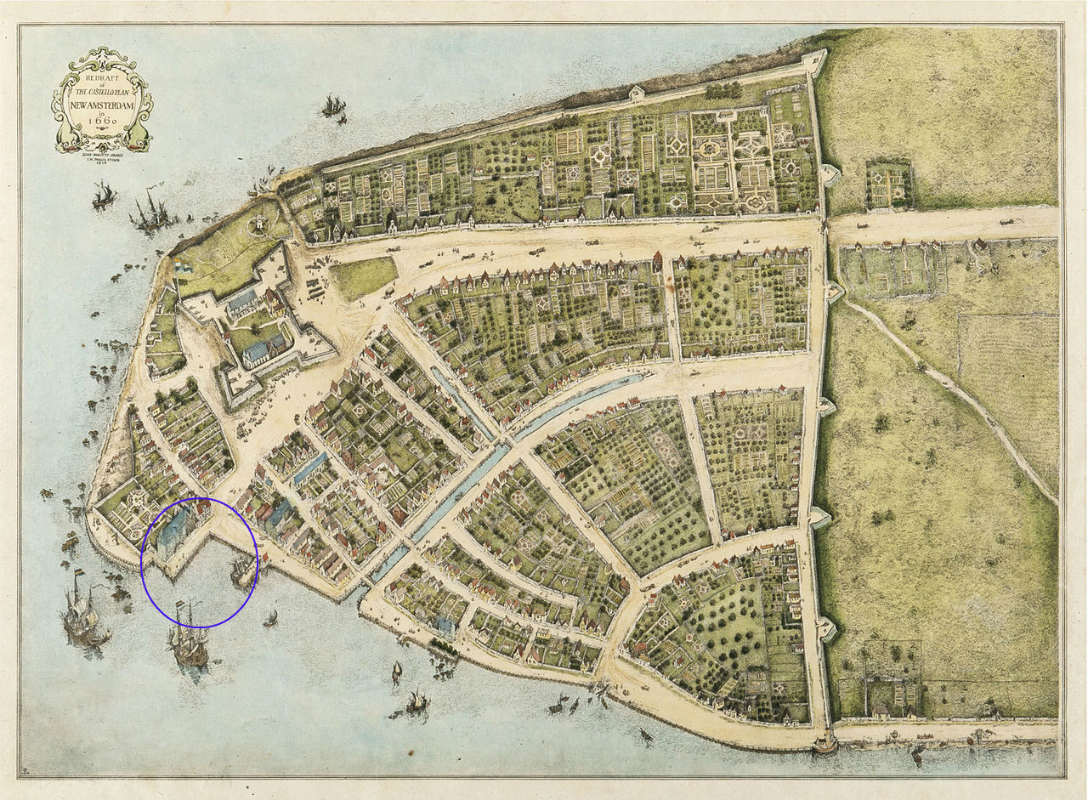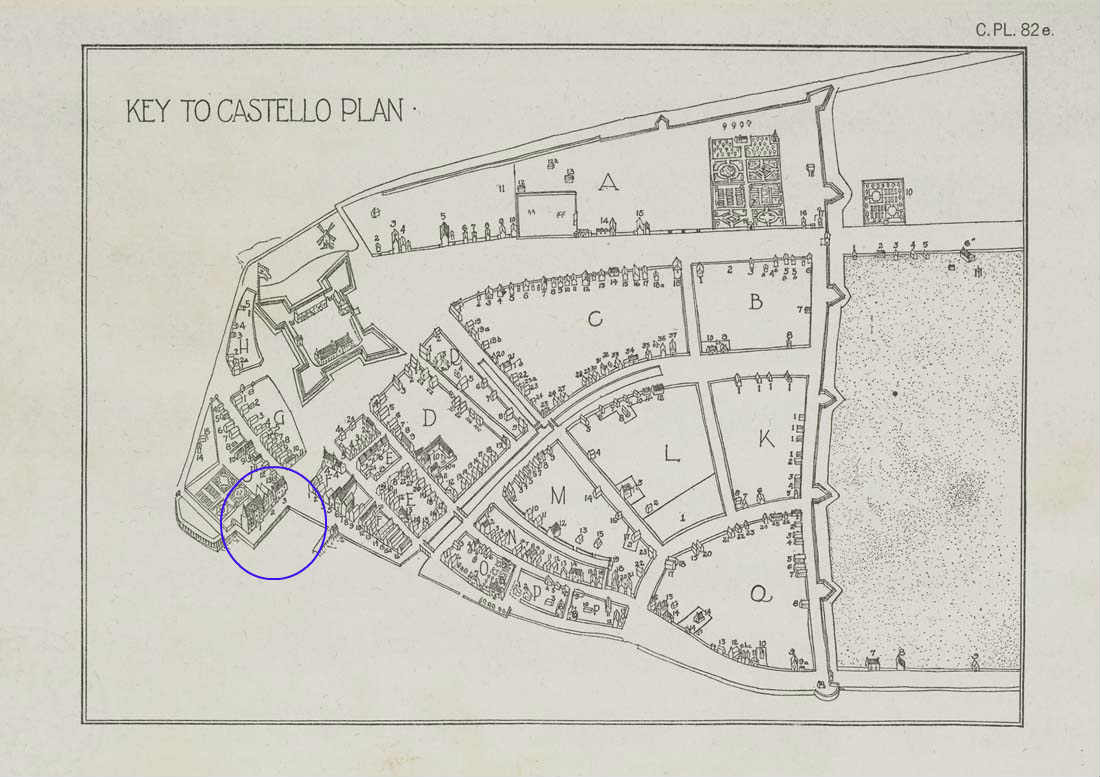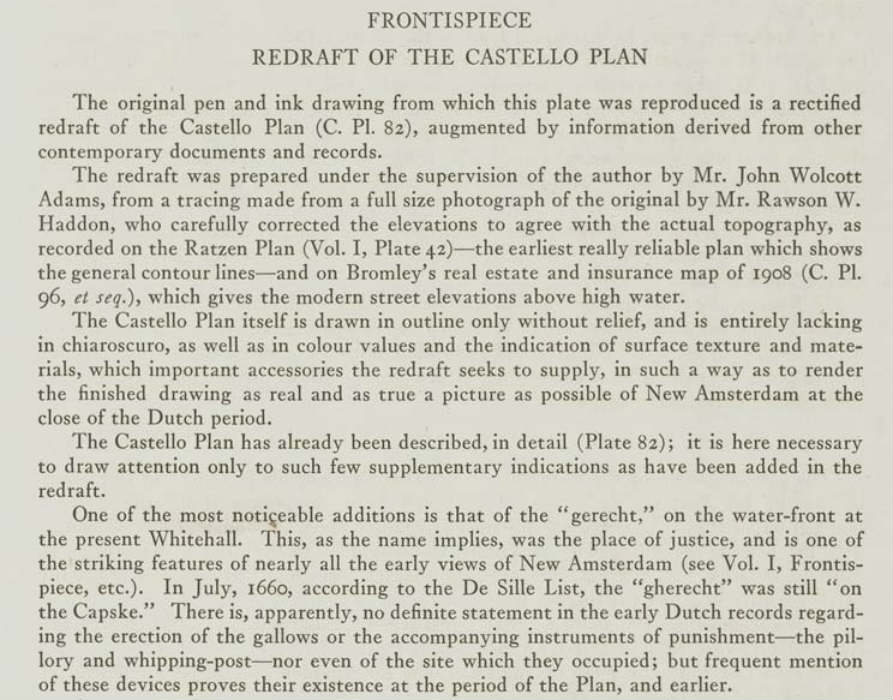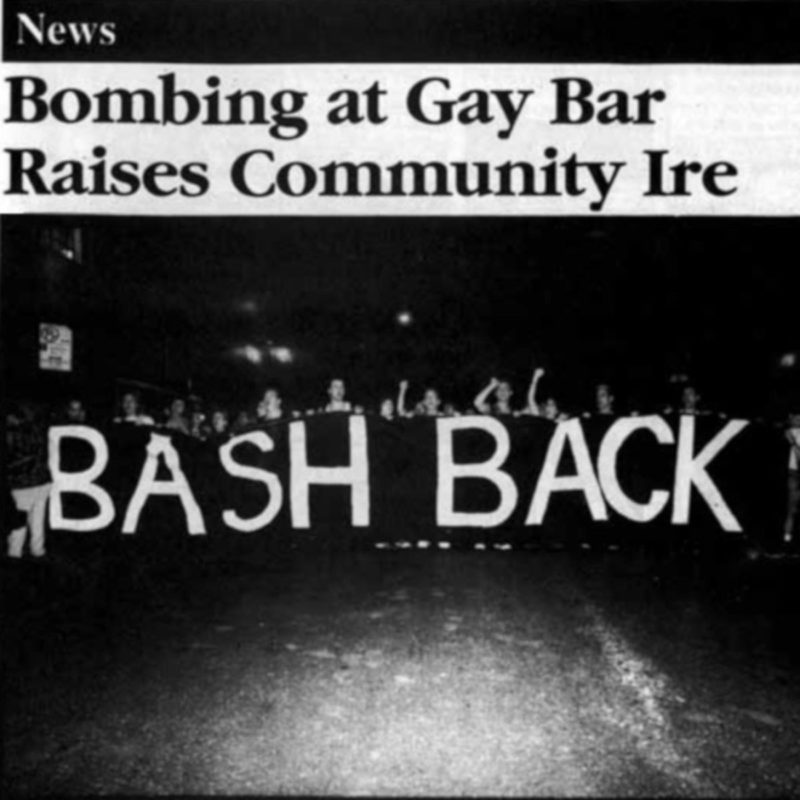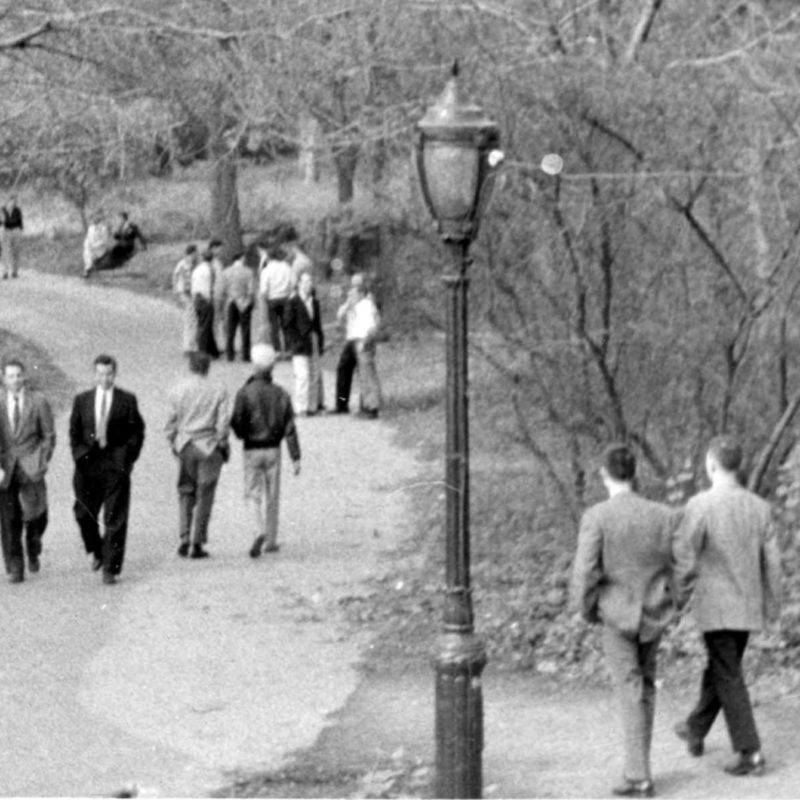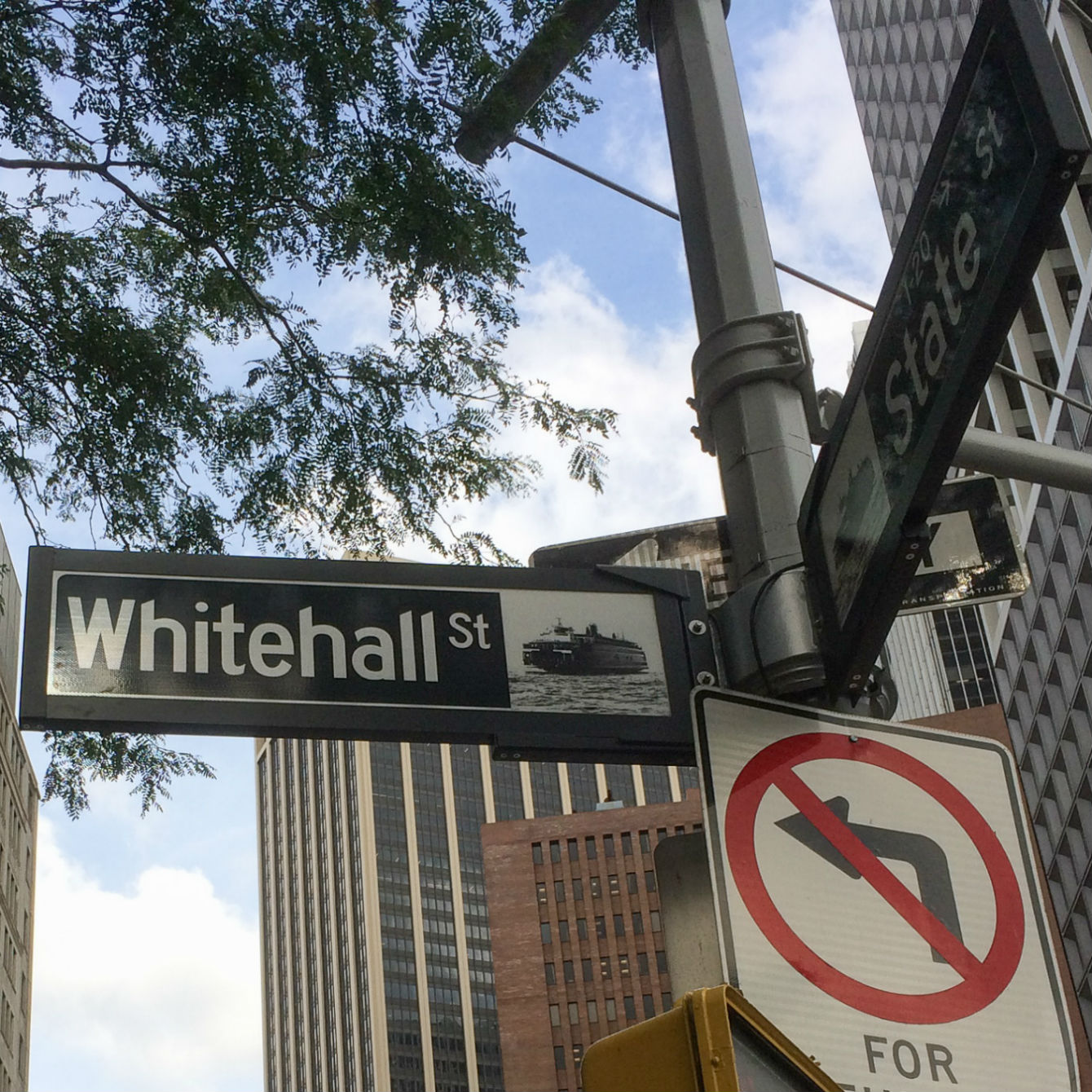
New Amsterdam “Place of Execution”
overview
Two men are known to have been executed in New Amsterdam in 1646 and 1660 for sexual relations with boys. Sodomy was punishable by death in New York until 1796, but these cases also involved assault on a minor.
The “place of execution” at the time of Dutch settlement was on Het Marckvelt at the Capske (cape or point), the original shoreline of Manhattan. When the English settled the area it was known as Whitehall. Today, the place of execution would roughly be located on Whitehall Street, just south of Water and State Streets.
History
The strong religious taboo against even the mention of homosexuality in the 17th and 18th centuries has made documentation of this period quite rare, aside from some statutes and court cases. There are three known sodomy cases involving men in Dutch New Amsterdam, resulting in two executions. Laws were in existence throughout the 17th and 18th centuries against sodomy, even if rarely enforced. The colony of New Amsterdam, though considered more socially and religiously tolerant in general compared to other colonies, made homosexuality a capital offense under Dutch law.
One of the earliest known cases was that of Harmen Meyndertsz van den Bogaert, a young Dutch immigrant barber-surgeon, who rose in rank to become commissary at Fort Orange (present-day Albany) after his exploration of Mohawk country in upstate New York on a trade mission there (he is credited as the first white man to reach the Mohawk Valley). In 1647, he was accused of sodomy with his slave Tobias. Harmen and Tobias fled to upstate New York, but the fugitives were captured to be brought back for punishment. They managed to escape again, but Harmen died, falling through the ice in the Hudson River (the fate of Tobias is unknown).
Two men are known to have been executed in New Amsterdam for sexual relations with boys, the crime doubly enforced, for same-sex contact as well as for assault on a minor. In 1646, Jan Creoli, an enslaved man of African descent, was turned in to the authorities by fellow slaves for sexual assault on a 10-year-old slave boy named Manuel Congo. Creoli was convicted of sodomy (“this crime being condemned of God as an abomination”) and ordered to be “conveyed to the place of public execution, and there choked to death, and then burnt to ashes.” Congo was flogged for his part. In 1660, Jan Quisthout van der Linde, a soldier guilty of sodomizing his servant, was sentenced “to be taken to the place of execution and there stripped of his arms, his sword to be broken at his feet, and he to be then tied in a sack and cast into the river and drowned until dead.” The boy, an orphan named Hendrick Harmensen, was punished as well – whipped for the sexual contact and ordered “sent to some other place by the first opportunity.” The place of execution at that time was on Het Marckvelt at the Capske (cape or point), along the original shoreline of Manhattan; later, in the period of English settlement, it was known as Whitehall. The then-adjacent Whitehall mansion was the 17th century Governor’s residence built by Peter Stuyvesant. The approximate location of the place of execution today would be on Whitehall Street, just south of Water and State Streets.
After English rule began in 1664, the Duke of York’s code was promulgated at that time for Long Island and Staten Island, then was extended to the Delaware River in 1676. It stated that “If any man lyeth with mankind as he lyeth with a woman, they shall be put to Death, unless one party were Forced or be under fourteen Years of age, in which Case he shall be punished at the Discretion of the Court of Assizes.” This statute apparently lapsed by 1691, but after the Revolutionary War in 1787, the New York State Legislature passed a law explicitly enforcing the death penalty for homosexuality. Pennsylvania was the first state in 1786 to drop the death penalty as punishment for this “crime.” In 1796, New York changed its criminal code, retaining the death penalty for treason and murder, but reducing punishment to life imprisonment for previous capital offenses.
Entry by Jay Shockley, project director (March 2018).
NOTE: Names above in bold indicate LGBT people.
Sources
“1646: Jan Creoli, for sodomy in slavery,” and “1660: Jan Quisthout van der Linde condemned to drown in New Amsterdam,” Executed Today website, June 25, 2014 and June 17, 2015, bit.ly/2FR7mmw.
Edward O’Reilly, “The ‘bad fate’ of Harmen Meyndertsz van den Bogaert,” bit.ly/2UaIpcL, (June 28, 2017).
Jonathan Ned Katz, Gay American History: Lesbians and Gay Men in the U.S.A. (New York: Thomas Y. Crowell Co., 1976), 22-23.
Isaac Newton Phelps Stokes, The Iconography of Manhattan Island, 1498-1909, Vol. 2 (New York: Robert H. Dodd, 1916).
Louis Crompton, “Homosexuals and the Death Penalty in Colonial America,” Journal of Homosexuality, vol. 1, no. 3 (1976).
Michael Cooney, “The Tale of Harmen Meyndertz van den Bogaert,” Upstate Earth website, April 6, 2010.
Do you have more information about this site?
This project is enriched by your participation! Do you have your own images of this site? Or a story to share? Would you like to suggest a different historic site?
